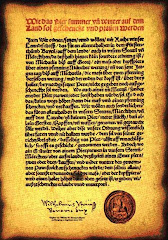
Last posting we talked about how some of the world's greatest sweet wines are made. This time, we'll take a look at some of these extraordinary wines and maybe get you to try some.
Sauternes: From Bordeaux, the Sauternes region precisely, these wines are some of the most luscious, complex and long ageing wines on the planet. Made primarily from the Semillon grape, and sometimes Saugignon Blanc as well, affected by botrytis, these wines exhibit flavors and aromas of honey, vanilla, oak, honeysuckle, sweet spice. The list goes on. With a satiny mouthfeel and long finish, these wines can be immensely satisfying.
What makes these wines, and all great sweet wines extraordinary, is balance: the balance the winemaker achieves between the intense sweetness, the acid and flavors highlighted in the wine. The fungus also adds a "flavor" as it is not removed when the wine is made.
The King of the Hill is Chateau d'Yquem. Are these wines expensive? Well, yeah! If you want to try this one, sell your house and buy a bottle. It's probably worth it. But also look at wines from Barsac and some of the lesser known regions: Bommes, Fargues, Preignac. SAUTERNES classifications put Yquem in a class by itself, Premier Cru Superieur Classe. Just below that come the classes of Premier Cru and Deuxieme Cru.
Late Harvest Wines from Germany and Austria: These wines are made mostly from the Riesling grape. Each category of late harvest wines has its own specific level of sugar required per liter. An Auslese has a certain amount, a Beerenauslese requires more. The categories are just about the same for the two countries: Auslese, Beerenauslese, Trockenbeerenauslese. Austria has an additional category, Ausbruch, that is between Beerenauslese and Trockenbeerenauslese. Good names. huh? Auslese means grapes from a harvest, LESE, that are left over or remaining, AUS. Hence, AUSLESE. BEERENAUSLESE-beeren refers to grapes shriveled to around the size of blueberries or smaller, the result of botrytis extracting more and more water.
Trockenbeerenauslese means the shriveled berries of Beerenauslese have continued to shrink and are now raisin sized.
As you would expect, each degree of ripeness yields less and less wine per grape. The price goes up. Anything beyond Auslese must be individually picked berries. The cost goes up. In Germany, especially, where the climate can be variable at best, these wines cannot be produced every year. The price goes up. Get the idea?
Austrian late harvest wines tend to have more affordable prices as the conditions for production are less variable than in Germany. Most years will produce late harvest wines of wonderful richness.
These wines, beyond Auslese, are sold in 375ml bottles and can range from around $25 for an Austrian Beerenauslese to several hundred dollars for a German TBA, Trockenbeerenauslese.
Well, I wrote more than I thought I would.
To be continued. Where to next with sweet wines? Greece, Southern France, Canada, Alsace. Stay tuned.





No comments:
Post a Comment